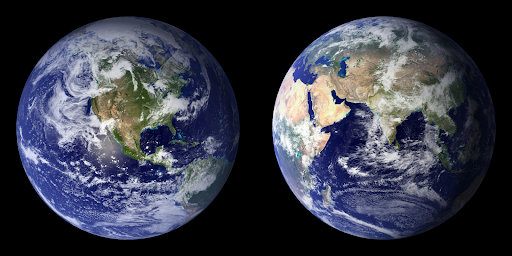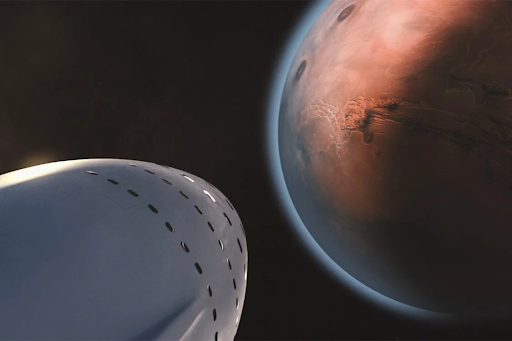
Mars and Earth are two such planets that have not only attracted scientists but also enthusiasts regarding their unique characteristics, which have created endless curiosity. Earth, our home, is a vibrant planet full of life with life-supporting atmospheric quality, vast supplies of liquid water, and dynamic features of geology. Mars is called the Red Planet, identified by the reddish hue on its surface, but this planet is just so vividly different – it’s characterized by a weak atmosphere, giant volcanoes, and deep canyons. This understanding of the dissimilarities between Mars and Earth also brings us to admire the conditions under which life is possible on our own planet and fuels the quest to uncover the mysteries of Mars, including the possibility of past life.
What is Earth?

Earth stands uniquely in a position to host an incredibly diverse range of life forms, in its third position from the Sun. Nitrogen and oxygen are its main atmospheric components; they supply the essential life gases and also behave as a protective shield for harmful solar and cosmic radiation.
Earth’s surface is 71% water and vast oceans significantly control climate and weather. Liquid water is abundant, distinguishing Earth from other bodies in our solar system. This element, plus the presence of oxygen, makes Earth a very hospitable place for any kind of life.
Another interesting feature of Earth is its geology. The crust of the planet consists of several large and small tectonic plates that continuously move. These are driven by forces from within the Earth’s mantle. It results in earthquakes, forms mountains, and creates volcanic activity, which are continually reshaping the planet’s surface.
In addition to the stable life-supporting environment, the core of liquid iron is responsible for the magnetic field on Earth, which offers a further shield against solar winds. All that together makes Earth an interesting, dynamic, and changing world, prompting scientists to understand planetary habitability.
What is Mars?

Mars, known and often called the Red Planet, is actually the fourth planet from the Sun. Its reddish color comes from a coating of iron oxide, or rust, which covers the surface. Compared to Earth, the atmosphere on Mars is very thin; carbon dioxide fills much of its space, and nitrogen and argon in smaller amounts. This very thin atmosphere leads to surface pressures on Mars less than 1% of Earth’s, where it cannot keep liquid water around for so long.
A majestic characteristic of Mars is Olympus Mons which is classified as the tallest volcano in the solar system; over 13.6 miles of height – this is almost 3 times Mount Everest’s height. Mars also has Valles Marineris, a canyon system stretching over 2500 miles long, larger even than the Grand Canyon on planet Earth.
Mars represents a scientific interest; many scientists believe that it, at some point in the past, could have had conditions suitable for life. A fascinating fact about Mars is that it is home to the tallest volcano in the solar system, Olympus Mons, which hints at its geological activity in the past. There is water that could have once flowed on its surface. Dry riverbeds and minerals, which only form in water, provide evidence of this fact. Curiosity and Perseverance are currently surveying Mars in an effort to gain clues about its history, geological activity, and signs that may prove evidence of ancient microbial life. It is now considered a focus point in the search for life beyond Earth.
Key Differences Between Mars and Earth
Mars and Earth possess several fundamental differences within their systems. To put this in perspective, Mars has a relatively thin atmosphere, composed mainly of carbon dioxide, which provides little basic shielding against solar radiation, while Earth’s atmosphere is comprised primarily of nitrogen and oxygen, with ample levels of water vapor to support various life forms. Mars’ temperature readings are generally more extreme, with the planet’s average temperature approximating a cool -80 degrees Fahrenheit relative to the Earth’s average, which is a much more habitable 59 degrees Fahrenheit.
Surface features differ greatly between the two planets, too. Mars has Olympus Mons, the solar system’s tallest volcano as well as Valles Marineris, a canyon far larger than the Grand Canyon. Earth boasts dynamic geological activities with tectonic plates causing earth-shaking earthquakes and forming mountains.
The reason Mars is still thought to be potentially capable of hosting life is being investigated by rovers on a mission to find remnants of past microbial life. Earth’s abundant liquid water and suitable climate have allowed complex life to thrive for millions of years.
It is primarily robotic missions that have been the explorers on Mars, but the Earth has been explored for hundreds of years by humans. Mars orbits the sun every 687 days, as opposed to Earth, which takes 365; long orbits result in longer seasons on the Red Planet.
Similarities between Earth and Mars
Earth and Mars share some very interesting similarities that make the study of these planets really intriguing. One of the most striking similarities would be the length of a day. A solar day on Earth equals 24 hours, while on Mars (a Martian Day is called a sol) equals roughly 24.6 hours. This close duration makes the concept of time relatively familiar between the two planets.
Another similarity is the presence of polar ice caps. Earth’s polar regions are covered with ice made of water, while Mars has polar ice caps composed of water ice and dry ice (frozen carbon dioxide). These ice caps on Mars grow and recede with the changing seasons, much like Earth’s do.
Both planets have been very well explored; several missions have been launched toward Mars. Mars has been repeatedly explored by rovers and orbiters, constantly returning valuable data regarding surface and atmospheric conditions on the planet. The motives to study them are sparked by the promising hints that Mars could also have liquid water earlier. Basically, the theory is that the existence of dry riverbeds and certain minerals proves that Mars was indeed once water-soaked, which could shed light on its previous climate conditions and the possibility of potential habitability.
How to Learn about Mars and Earth
Orboot Earth and Orboot Mars by PlayShifu are interactive globes that, through the implementation of augmented reality, breathe life into the wonders of our planet and those of Mars. Orboot Earth is an interactive globe that gives young kids an engaging method with which to study Earth’s geography, various ecosystems, and cultural landmarks by making complex topics accessible to them.
Using Orboot Mars, users delve into the unique features of the Red Planet. These interactive tools give the children hands-on learning experiences and foster the spirit of curiosity, and studying planetary science is made fun and informative. These innovative toys help children learn more about Earth and Mars, creating a lifelong interest in space exploration.
Conclusion
It is only in recent years that the fundamental distinctions between Mars and Earth suggest how much more a home planet should be perfectly suited to life. Earth contains a very dense atmosphere, liquid water resources are abundant, and geological activity remains dynamic. With its extremes of temperature and atmospheric scenario, Mars is much more hostile.
The differences propel scientific research, which allows mankind to know about the formation of the planet and the kind of climate it could have created, potentially giving insight into life off of Earth. The robotic missions, as Curiosity and Perseverance continue to discover important clues about the history of the Red Planet, continue to enrich our knowledge of both planets.
FAQs:
1. Why is Earth more habitable than Mars?
Earth is more habitable than Mars due to its dense atmosphere, abundant liquid water, and mild temperatures, which create a life-supporting environment.
2. Can humans survive on Mars with the current technology?
Currently, humans cannot survive on Mars with existing technology. Life support systems, habitats, and sustainable food sources need significant advancement.
3. How does the atmosphere of Mars differ from that of Earth?
Mars’ atmosphere is thin and primarily composed of carbon dioxide, unlike Earth’s nitrogen-oxygen-rich atmosphere.
4. How many volcanoes does Mars have?
Mars has several large volcanoes, including Olympus Mons, the tallest in the solar system.
5. What are the most significant geological features on Mars and Earth?
Significant geological features on Earth include dynamic tectonic plates and vast oceans, while Mars boasts Olympus Mons and Valles Marineris.

